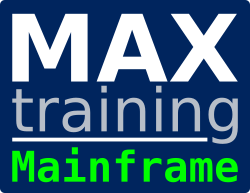Db2 12 for z/OS Introduction to System Administration
Code: CV853GDescription
This course provides students with an introduction to the skills and knowledge needed to administer a Db2 12 for z/OS system.
Audience
This course is intended for z/OS system administrators, database administrators, or other technical individuals who will be managing Db2 12 for z/OS.
Prerequisites
- Understanding of the objects (such as databases, table spaces, tables, indexes, and so forth) used in a Db2 subsystem
- Basic knowledge of SQL
- At least one year as a z/OS systems programmer or equivalent knowledge
OR
- At least one year as a Db2 for z/OS Database Administrator
Objectives
After completing this course, students should be able to:
- Start and stop a Db2 subsystem
- Use the SET SYSPARM command
- Access the system log to gather information about the subsystem initialization, operation, or shutdown
- Describe the components and address space structure of a Db2 subsystem
- Explain the use of RACF (or another external security program) for Db2 connection security
- Explain the use of Roles and Trusted Contexts
- Implement security procredures for a Db2 subsystem
- Explain Db2 program flow for all environments
- Explain parameter setting for the IRLM
- Invoke and utilitze Db2 TSO facilities
- Use the Db2 Catalog to monitor subsystem authorizations
- Work with the Active Log data sets
- Explain Db2 logging
- Use SET LOG SUSPEND and SET LOG RESUME
- Use DSNJU004 to print log map and interpret the results
- Use DSNJU003 to rename Db2 data sets
- Plan for recovery of a BSDS failure
- Monitor and control a Db2 subsystem
- Explain transaction flow in IMS and CICS environments (optional)
- Describe the CICS and DB2 environment (optional)
- Explain the difference between JDBC and SQLJ
- And much more
Topics
Starting, stopping, and accessing Db2
• Starting Db2 as part of the z/OS IPL process
• Data set allocation and APF authorization
• The START DB2 and STOP DB2 commands
• zParms, DSNTIJUZ, and DSNZPARM
• Address spaces
• IRLM and lock storage
Db2 components and processes
• BSDS and logging
• Catalog and directory
• Program preparation and execution
• Transaction execution
• Data sharing in the sysplex
System security
• Protecting Db2 data sets
• Controlling connections to Db2
• Db2 authorization exits
• Trusted context and roles
• Securing an application server
Db2 authorization
• Authorizations
• Controlling access for dynamic and static SQL
• Access control authorization exits
• Distributed security
Program flow for all environments
• Connection types and language interfaces
• Program flow
TSO and batch environments
• TSO
• Utilities
Transaction flow in IMS and CICS (optional)
• Transaction processing
• Thread reuse
• SIGNON exit
CICS - Db2 environment (optional)
• CICS connections to Db2
• DSNC transaction
IMS - Db2 environment (optional)
• IMS-Db2 introduction
• IMS TM
• IMS/DLI batch environment
Distributed - Db2 environment
• Distributed attachment
• Location aliases
• DDF profiling
• Block fetch
• Db2 REST services
Logging
• The Db2 log
• Log commands
• Archiving considerations
• BSDS
Db2 utilities
• Categorization
• DSNJU003 and DSNJU004
• BACKUP and RESTORE SYSTEM
Operations (monitoring and controlling Db2)
• Issuing Db2 commands
• Basic workload controls
• Monitoring and controlling utilities
• DISPLAY commands
• Starting / stopping databases
Recovery
• Planning for recovery
• Table space recovery
• Log considerations
• DISPLAY and SET LOG commands
• Recovery considerations
System recover/restart
• System checkpoints
• System restart after normal shutdown
• Page externalization
• Two-phase commit processing
• System restart after system failure
• Recovery considerations
Java with Db2 (optional)
• Java
Administrative task scheduler (optional)
• Overview
• Routines
• Scheduling features
• Life cycle
• Syncronization
• Commands
Price (ex. VAT)
Duration
Delivery methods
- Classroom
- On-site (at your location)
- Virtual (instructor online)
